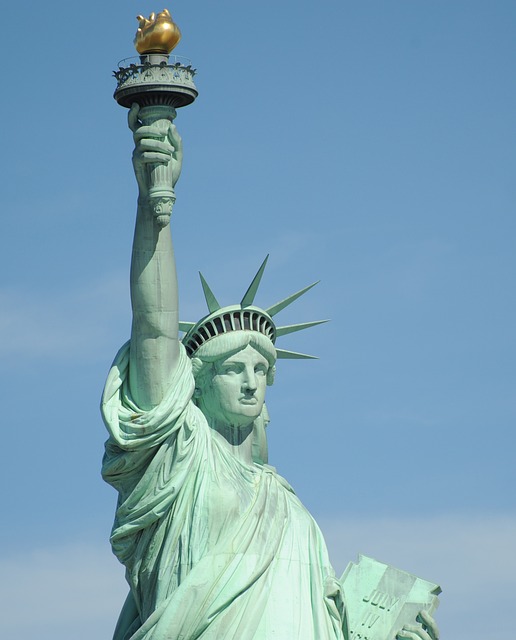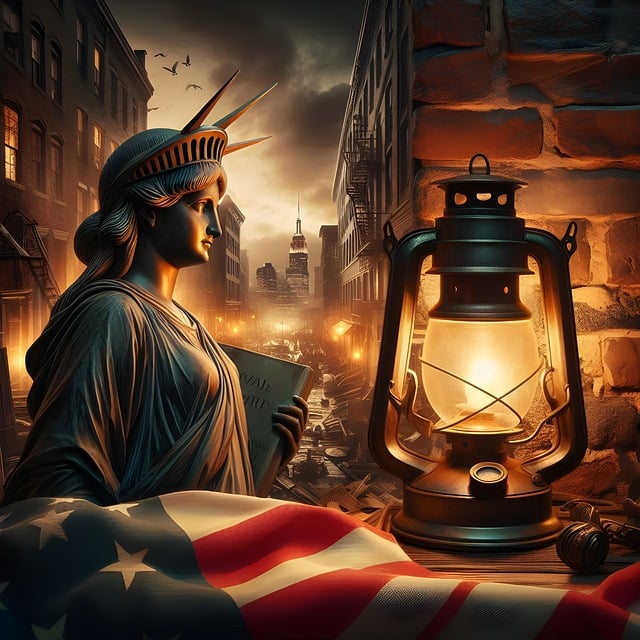The American Eagle and flag stand as enduring emblems of strength, national pride, and identity, deeply woven into the fabric of American consciousness. This article delves into the multifaceted symbolism these icons represent, from their historical roots to their contemporary relevance. Explore the artistic mastery behind their design, the role they play in uniting citizens, and how they continue to inspire awe and admiration. Join us as we celebrate the artistry and spirit encapsulated by the American Eagle and flag, and understand why they remain significant symbols of resilience and unity.
- The Enduring Symbolism of the American Eagle and Flag
- Historical Significance: The American Eagle's Role in National Emblems
- The Artistry of the Eagle: A Testament to Craftsmanship and National Identity
- The American Eagle and Flag in Modern Contexts: Pride, Unity, and Heritage
- Iconic Imagery: How the Eagle and Flag Represent Strength and Resilience
- Celebrating the American Spirit: Ceremonies and Traditions That Honor the Eagle and Flag
The Enduring Symbolism of the American Eagle and Flag

The American Eagle, a powerful emblem gracing the country’s coat of arms and its currency, is a testament to the nation’s resilience and spirit. This majestic bird, with its spread wings and sharp gaze, symbolizes strength, freedom, and the power of democracy. It stands as a guardian of the homeland, embodying the ideals upon which America was founded: liberty, justice, and prosperity. The eagle’s presence on national symbols like the Great Seal of the United States and the Presidential seal underscores the country’s commitment to these values. Its image serves as a daily reminder to citizens and visitors alike of the country’s enduring legacy and the principles it holds dear.
Similarly, the American flag, with its iconic stripes and stars against a field of deep blue and white, is a visual representation of national identity and pride. Each star represents a state within the union, and the thirteen stripes honor the original thirteen colonies that declared independence from British rule. The flag has flown over pivotal moments in history, from times of great triumph to periods of profound sorrow, yet it remains a beacon of unity and continuity. It is an enduring symbol of the collective aspirations and achievements of the American people, and its presence is felt in every corner of the nation, from small-town Main Streets to the halls of Capitol Hill. Together, the American Eagle and flag are more than mere symbols; they are a representation of a people bound by a shared history, common values, and an unwavering commitment to their nation’s ideals.
Historical Significance: The American Eagle's Role in National Emblems

The American Eagle, a powerful symbol woven into the fabric of the nation’s identity, has long stood as a representation of strength and national pride. Its image graces the Great Seal of the United States, emblematic of the sovereignty and independence of the country. The eagle holds a unique place in American heritage, featuring prominently on both the national flag and the Presidential seal. Historically, the eagle has been used as a symbol of freedom and power across various cultures, but its adoption by the United States government signifies a commitment to vigilance, strength, and freedom. The bald eagle, in particular, became the national emblem following the founding of the nation. Its presence on the flag, with its head facing forward and its wings spread wide, conveys a sense of bravery and readiness to defend the country’s ideals. This iconic bird not only represents the resilience of the American spirit but also the unity and indivisibility of the states under one nation, as denoted by the 13 stars above it on the flag, symbolizing the original colonies that declared independence from British rule. The American Eagle’s role in national emblems is a testament to the enduring values and the collective identity of the American people throughout history.
The Artistry of the Eagle: A Testament to Craftsmanship and National Identity

The American Eagle, a symbol deeply woven into the fabric of American identity, stands as a testament to the nation’s commitment to craftsmanship and artistic integrity. The intricate design of the eagle on the flag is a masterful blend of artistry and symbolism. Each feather, each feature meticulously rendered, speaks to the skilled hands that brought it to life. The eagle’s sharp gaze and outstretched wings evoke a sense of strength and vigilance, embodying the values upon which the nation was founded. This iconic image is not merely a representation but an embodiment of American resilience and pride, serving as a daily reminder to citizens and visitors alike of the cultural heritage and national character that the flag represents. The craftsmanship evident in the creation of the American Eagle on the flag is a reflection of the country’s dedication to excellence and its respect for tradition, ensuring that each new iteration retains the integrity and honor of its predecessors while standing as a symbol of unity and national identity in the modern world.
The American Eagle and Flag in Modern Contexts: Pride, Unity, and Heritage

The iconic symbolism of the American Eagle and flag intertwines deeply with the nation’s pride, unity, and heritage, resonating in modern contexts as a powerful emblem of identity. The eagle, a bird of great strength and majesty, is a recurring motif in American cultural and historical narratives, often representing the resilience and power of the United States. Its presence on the national flag, alongside the stars and stripes, serves as a tangible symbol of the country’s values and aspirations. In modern society, the American Eagle and flag are manifested in various settings, from government buildings to private residences, military uniforms to sports arenas, each instance reinforcing a sense of national unity and shared history. These symbols not only evoke a collective memory but also inspire a spirit of cooperation and solidarity among Americans from diverse backgrounds.
In contemporary discourse, the American Eagle and flag are celebrated for their role in unifying individuals across the nation, transcending regional, cultural, and ideological differences. They stand as testaments to the enduring legacy of the United States, a legacy that is honored and respected in everyday life. The American Eagle’s bold imagery on coinage, memorabilia, and various forms of media underscores its significance as a national icon. Similarly, the flag, with its 13 stripes and stars, continues to be a beacon of hope, freedom, and justice, reminding citizens of their shared heritage and the collective journey that has shaped the nation’s destiny. The American Eagle and flag thus remain at the heart of America’s cultural fabric, symbolizing both the past achievements and the future aspirations of the American people.
Iconic Imagery: How the Eagle and Flag Represent Strength and Resilience

The iconic imagery of the American Eagle and the flag are deeply woven into the cultural fabric of the United States, symbolizing the nation’s strength and resilience. The American Eagle, a powerful avian emblem, is synonymous with the country’s vigor and agility. Its sharp gaze and spread wings signify the nation’s ability to soar above challenges and navigate through adversity with unwavering determination. This eagle, as depicted on the country’s official seal and various national insignia, stands as a testament to America’s robust spirit and indomitable will. Accompanying this emblem is the American flag, its stripes and stars a bold declaration of independence and unity. Each red and white stripe represents one of the original thirteen colonies that broke free from British rule, while the stars on the blue field symbolize the bravery and ideals of the nation’s citizens. Together, the eagle and the flag are a visual narrative of America’s history and values, embodying the resilience and enduring strength that has defined the country throughout its storied past. These symbols not only inspire but also serve as a daily reminder of the collective resolve and pride of the American people.
Celebrating the American Spirit: Ceremonies and Traditions That Honor the Eagle and Flag

The American spirit, a blend of resilience, hope, and patriotism, is often symbolized by the country’s emblematic representations—the American Eagle and the flag. These icons serve as a testament to the nation’s identity and values, deeply ingrained in ceremonies and traditions that are both solemn and celebratory. The American Eagle, a creature of strength and majesty, is celebrated for its agility and sharp vision, traits admired by many. It is featured prominently on official seals, including the Great Seal of the United States, and is an integral part of national emblems, reflecting the country’s commitment to freedom and independence. The flag, with its thirteen alternating red and white stripes and fifty stars representing the states, flies high during significant events, from solemn memorial services to the exuberant festivities of Independence Day. These ceremonies and traditions foster a sense of unity and national pride, reminding citizens of their shared history and common goals. The respect for these symbols is evident in the meticulous rituals surrounding their display, such as the raising and lowering of the flag at precise moments, and the recitation of the Pledge of Allegiance, which binds people together in a common pledge of loyalty and reverence for what the flag represents. Together, the American Eagle and the flag are not merely symbols but are a tangible expression of the collective spirit of the nation, embodying the values and aspirations of its people.
